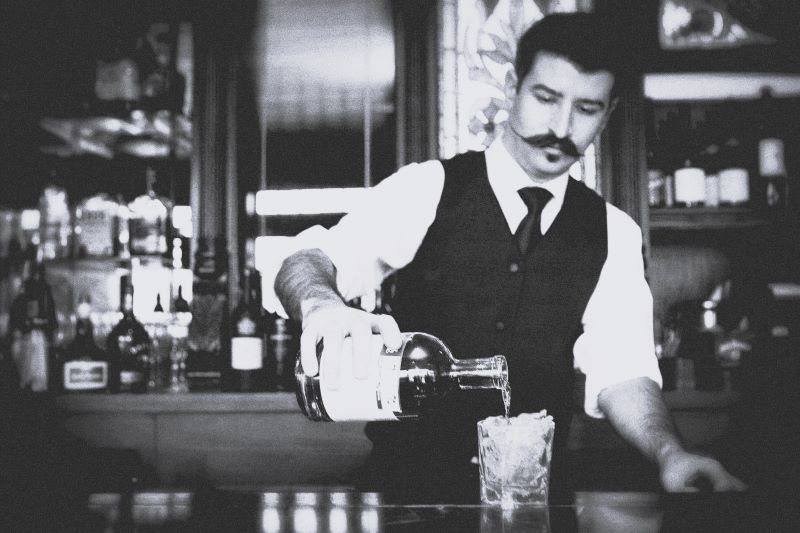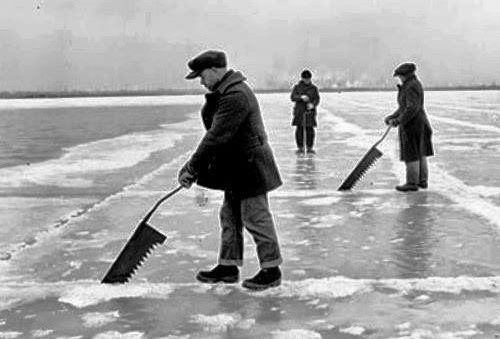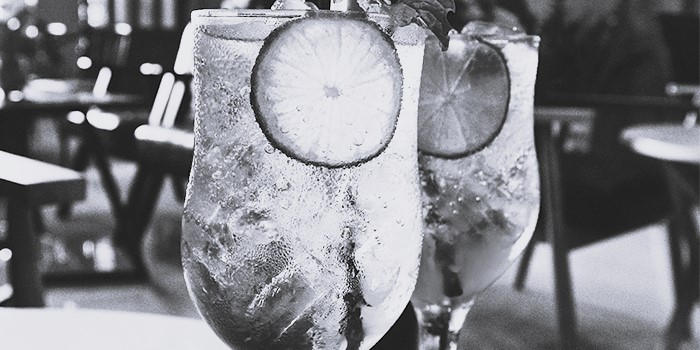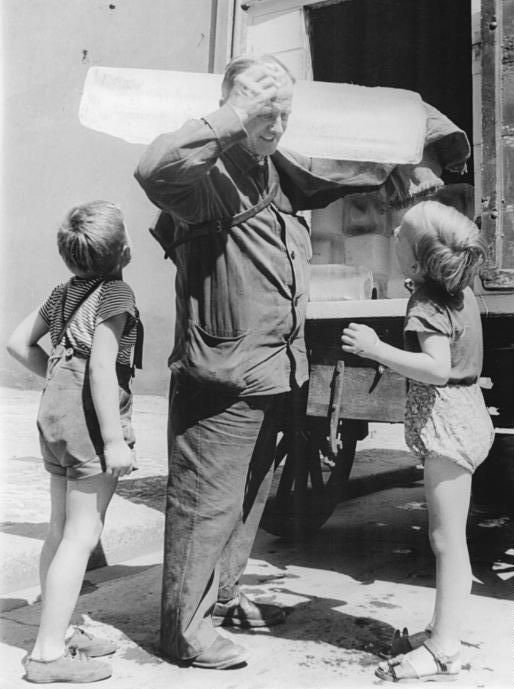By Bruce Doorly
The iceman played an important role in America before households had electric refrigerators as he delivered a block of ice a couple of times a week for the ice box.
But first, a little history about ice itself.
But in 1805, one rich kid from Boston, Frederic Tudor, had a hunch that if ice could be efficiently harvested from frozen ponds and lakes, then transported without melting to the places with warmer climates, that the ice product would be an enormous hit. He reasoned once they saw the benefits of ice, they would not be able to live without it. Despite being ridiculed by others, he simply could not let go of his obsession.

On this first attempt things did not go well. He found that 90% of the ice had melted on the journey. And the wealthy islanders in the resorts did not understand the benefits of ice. So he set out to educate them. He visited restaurants and gave free samples of ice for their drinks. He made some progress with the islanders by showing them the benefits of ice. But the first cargo shipment was a financial failure.
Frederic Tudor had shown the world the benefits that ice had to offer, and as he predicted the world could no longer live without a steady supply of ice. Naturally competitors arose and a large industry was established.

The ice houses were improved as well. It was discovered that if ice sits in the melted water that it will speed additional melting so the melted water had to drain.
And to insulate “blocks of ice”, sawdust, a previously useless product of the wood trade, was ideal.

The (natural) ice taken from ponds and lakes had two major issues. It was occasionally polluted and a consistent supply to a now ice dependent world could not always be counted on during the warmer winters. This led to a search for an alternate way of obtaining ice. Many people tried their hand at this. Ironically the initial solution did not have to wait for the discovery of electricity.
An inventor John Gorrie produced some ice in 1851 with a process using ammonia with an air-cycle engine powered by coal. After his death in 1855, others slowly built upon his work. By 1875, a substantial amount of man-made ice was being produced commercially. But it would not be until 1914 that the production of man-made ice was more than that of natural ice. Natural ice harvesting would continue until the 1930s until it died out.
As America and the rest of the world discovered the benefits of ice, the first ice boxes were invented. These were small wooden insulated boxes about 4 foot tall and 2 feet wide.
Years before electric refrigerators, these ice boxes needed blocks of ice for them to remain cold insuring the preservation of food. By 1880 an ice box was in most homes.

On hot summer days the arrival of the iceman was a welcome site for a group of neighborhood kids who were outside playing. For when the iceman had to cut up blocks of ice to meet specific sizes, splinters of ice would break off. The kids quickly picked up these scraps of ice. These were the cold treats of that era.
One Raritan girl, Irene Sixt, now in her 90s, still remembers the iceman’s name, Mr. Fischer, and recalls that he always gave the ice block a few extra whacks so that more kids would get a treat. By the 1950s the iceman was no longer needed as electric refrigerators replaced the icebox.
You see the iceman came into the house when the husband was at work. And the image of the iceman was of a masculine guy as he carried heavy blocks of ice. Some husbands and others occasionally wondered if the iceman was providing the housewife more than just ice.
In this author’s research, I found the earliest “known” supplier of ice in Raritan was Gallagher & Richards (later the Gallagher Brothers) in 1897. The newspaper often reported on the status of their annual ice harvesting. For decades they supplied natural ice that was from the Raritan Canal and Lake Hopatcong.
In 1928, a large ice processing plant, Crystal Ice, was built on the north-east corner of Route 206 and Somerset Street where a jughandle is today. They delivered their man-made ice to the homes for years, but after about 1950 people went to their store to pick up ice. Crystal Ice was open till the early 1980s.
Today ice is readily available in most grocery stores.